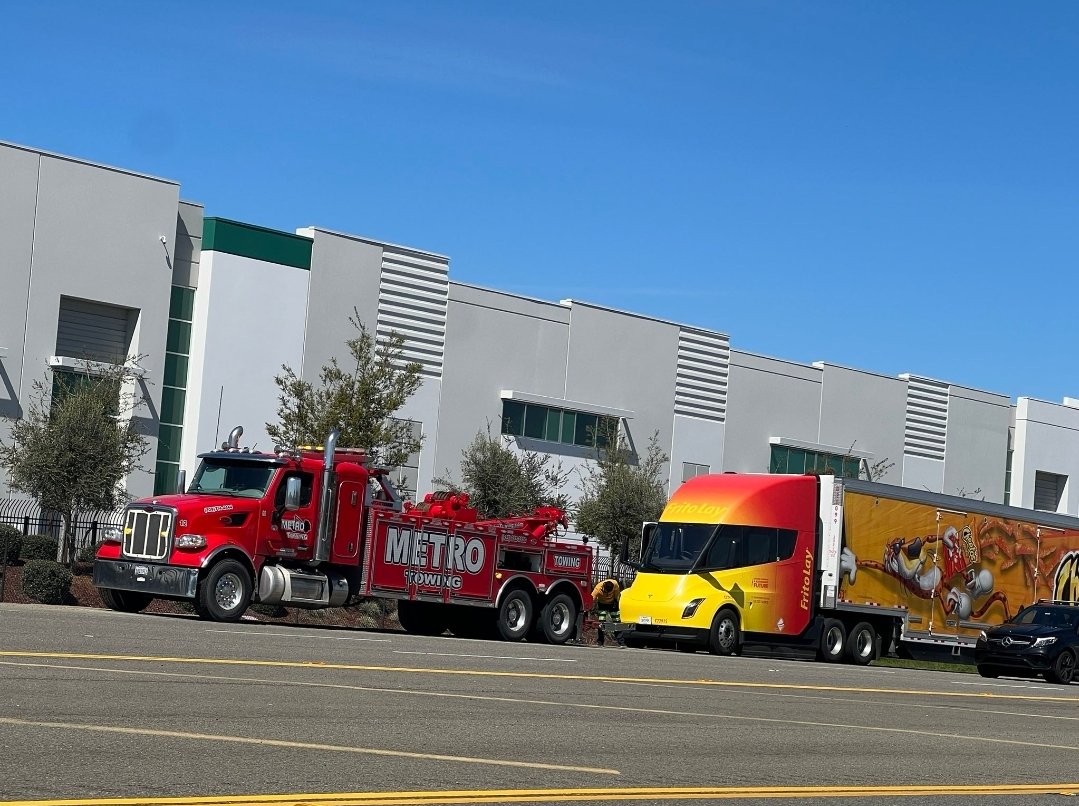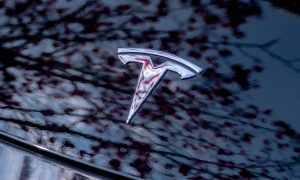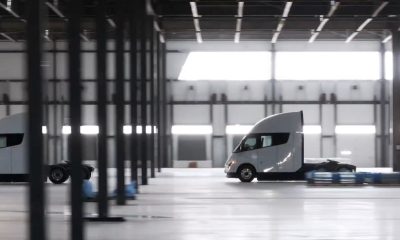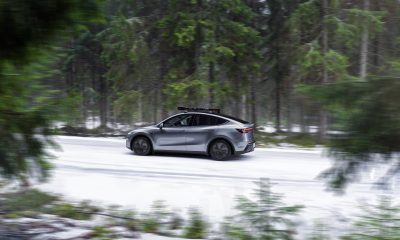Since Tesla delivered the first units of its all-electric Semi to Frito-Lay facilities in Modesto, California, in December 2022, any instance of one breaking down on the side of the road has been photographed and highly publicized. However, Teslarati has been told that at least some of the “breakdowns” are caused by a glitch within a software switch, and drivers are pulling over voluntarily as a precaution because the dash screens will flicker and sometimes shut off.
Since December, there have been at least eight instances of Tesla Semi vehicles breaking down. Some attributed it to a loss of range from carrying a load of products, as weight and hauling affect how far an EV can go.
Others suspected it was a mechanical issue, as the Semi is still a relatively young product that has been in development for some time but has only been used in real-world applications by a company that is not Tesla for a few months.
Tesla Semi developers reflect on first deliveries: ‘Out the door. For the world.’
While these are a possibility, they would be expected. Vehicles break down all the time for various reasons, including mechanical failures, and people often run out of gas in combustion engine vehicles and/or range in EVs.
Tesla Semi drivers are experiencing dash issues
At least some of the Semi breakdowns can be attributed to a glitch with a software switch, Teslarati has learned. How many of the breakdowns can be attributed to this issue is unknown, but more than one has been described as having this problem.
According to a source close to the operation in Modesto, drivers are pulling over their Semis as a precaution, as the glitch is causing the dash screens and lights on those screens to flicker and sometimes shut off. “They don’t know what to do,” said the person who did not want to be identified. “So they just pull over, and then they are towed.”
Drivers and others involved in the logistics portion of the operation at Frito-Lay that use the Tesla Semi have stated that the screens will not operate properly. Drivers are pulling over as the screens hold valuable information, such as speed, range, camera views surrounding the truck, suspension information, trailer hitch controls, and more.
Tesla Semi interior (Credit: Tesla)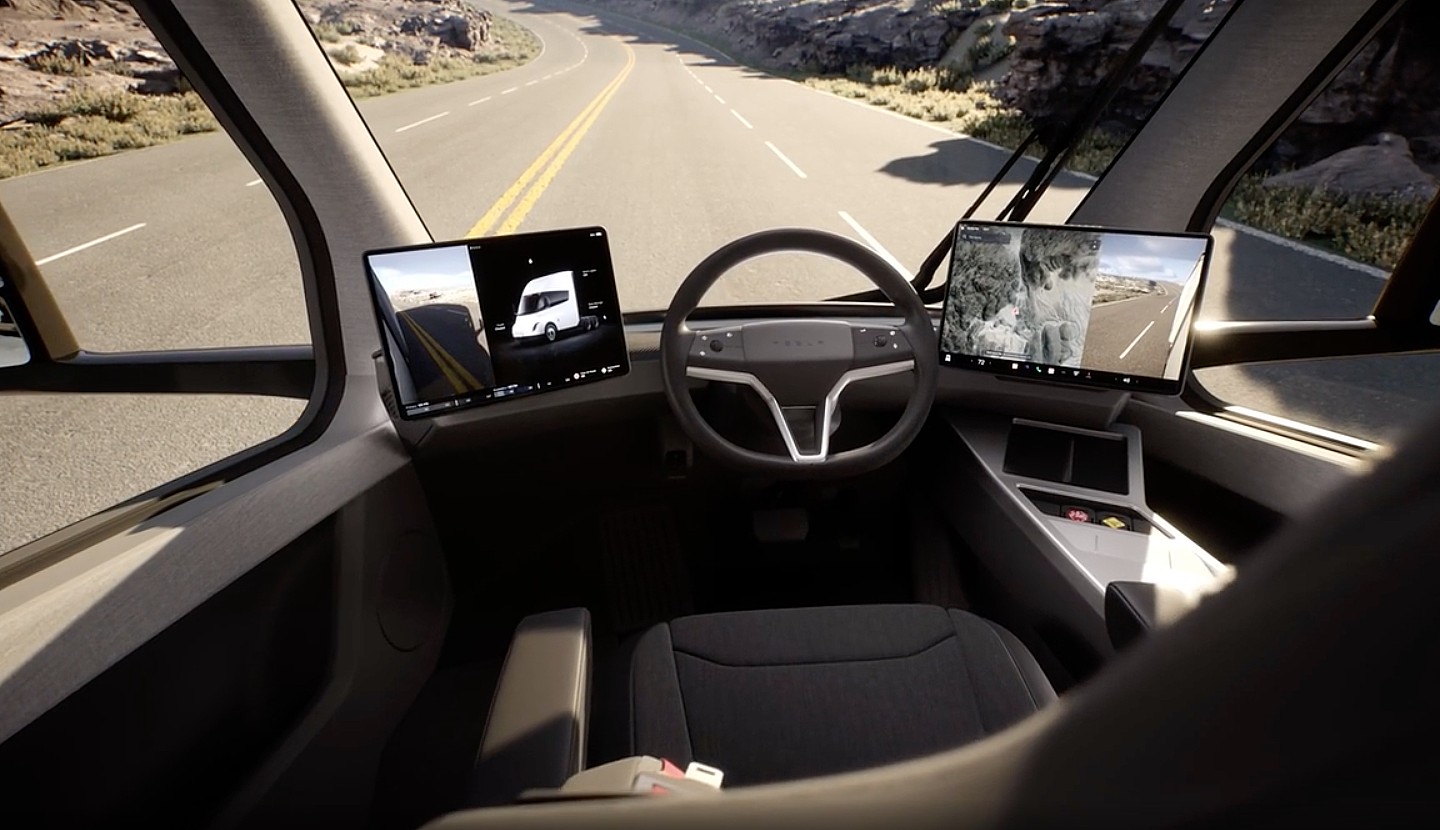
Without the screens being operational, drivers run into issues that can affect how their jobs are performed, including important safety metrics like speed.
The vehicles are then towed to what we were told is a “secret location” in Lathrop, California, for inspection and repair.
A tow truck driver that has been responsible for transporting the Semis to Lathrop said they had towed at least four units to that location thus far.
Why This Isn’t So Bad
The Semi has only been in Frito-Lay’s hands for about four months, and it is an extremely early project that is still a very limited operation. Frito-Lay expects to have only fifteen Tesla Semis in Modesto this year, so the vehicle is not taking over the entire fleet. In fact, Frito-Lay has adopted various sustainable technologies from several companies to make the Modesto plant more environmentally friendly.
The issues, if completely software-related, can be fixed by Tesla engineers. While the Semi is much different than its passenger vehicles, Tesla has a reputation for having some of the best software in the EV industry. There would likely be much more concern if these breakdowns could be attributed to a part failure or range depletion.
Tesla already displayed the Semi’s capabilities with a full load during the unveiling event in December, showing the all-electric class 8 truck traveling 500 miles on a single charge. We were not told about or made aware of any hardware failures or breakdowns that were caused by parts failures.
Tesla Semi completes 500-mile journey weighing in at 81,000 pounds
The problems with the Semi are likely expected by both Tesla and Frito-Lay as it is still an early-stage vehicle that is being rolled out in a very limited fashion.
Frito-Lay/PepsiCo. did not immediately respond to our request for comment.
What’s Next
Tesla is still moving forward with its plans to expand Semi production in Nevada, as earlier this year, it announced it would build a $3.5 billion expansion to Giga Nevada.
As for Frito-Lay and PepsiCo’s facility in Modesto, there is no indication that they will let a few early issues with the Semi ruin their fleet. In fact, the facility is set to have Megachargers installed at its plant in Fresno, California.
As far as we know, the Semi is still operating daily. Yesterday, it was spotted in Sacramento.
The big picture is that vehicles break down, and new vehicles sometimes have issues that need to be ironed out. It doesn’t mean the project is a failure or that the Semi is doomed to be a dud. It’s the growing pains of the Semi operation.
Disclosure: Joey Klender is a TSLA Shareholder.
I’d love to hear from you! If you have any comments, concerns, or questions, please email me at joey@teslarati.com. You can also reach me on Twitter @KlenderJoey, or if you have news tips, you can email us at tips@teslarati.com.
News
Tesla cleared in Canada EV rebate investigation
Tesla has been cleared in an investigation into the company’s staggering number of EV rebate claims in Canada in January.
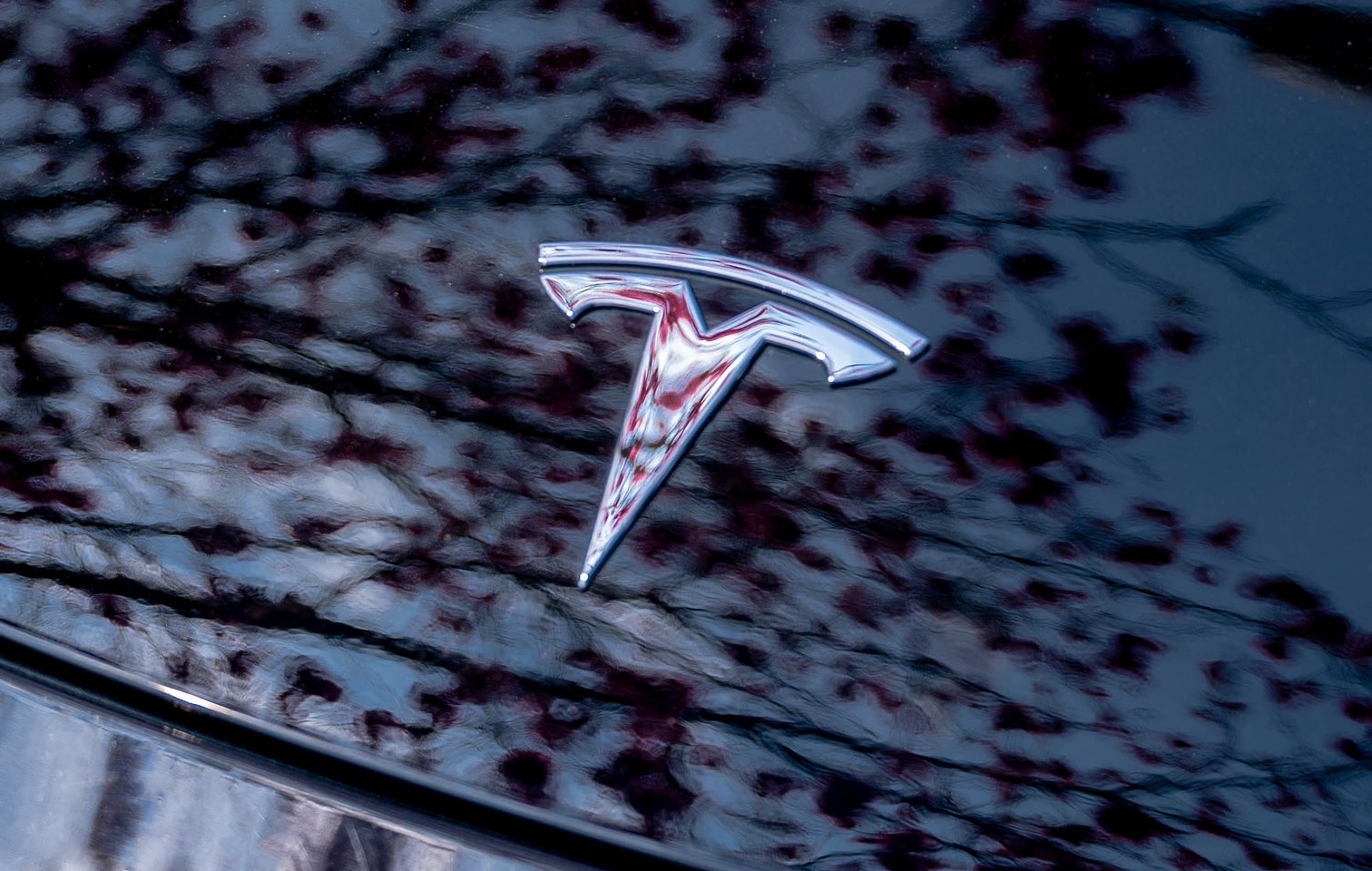
Canadian officials have cleared Tesla following an investigation into a large number of claims submitted to the country’s electric vehicle (EV) rebates earlier this year.
Transport Canada has ruled that there was no evidence of fraud after Tesla submitted 8,653 EV rebate claims for the country’s Incentives for Zero-Emission Vehicles (iZEV) program, as detailed in a report on Friday from The Globe and Mail. Despite the huge number of claims, Canadian authorities have found that the figure represented vehicles that had been delivered prior to the submission deadline for the program.
According to Transport Minister Chrystia Freeland, the claims “were determined to legitimately represent cars sold before January 12,” which was the final day for OEMs to submit these claims before the government suspended the program.
Upon initial reporting of the Tesla claims submitted in January, it was estimated that they were valued at around $43 million. In March, Freeland and Transport Canada opened the investigation into Tesla, noting that they would be freezing the rebate payments until the claims were found to be valid.
READ MORE ON ELECTRIC VEHICLES: EVs getting cleaner more quickly than expected in Europe: study
Huw Williams, Canadian Automobile Dealers Association Public Affairs Director, accepted the results of the investigation, while also questioning how Tesla knew to submit the claims that weekend, just before the program ran out.
“I think there’s a larger question as to how Tesla knew to run those through on that weekend,” Williams said. “It doesn’t appear to me that we have an investigation into any communication between Transport Canada and Tesla, between officials who may have shared information inappropriately.”
Tesla sales have been down in Canada for the first half of this year, amidst turmoil between the country and the Trump administration’s tariffs. Although Elon Musk has since stepped back from his role with the administration, a number of companies and officials in Canada were calling for a boycott of Tesla’s vehicles earlier this year, due in part to his association with Trump.
News
Tesla Semis to get 18 new Megachargers at this PepsiCo plant
PepsiCo is set to add more Tesla Semi Megachargers, this time at a facility in North Carolina.
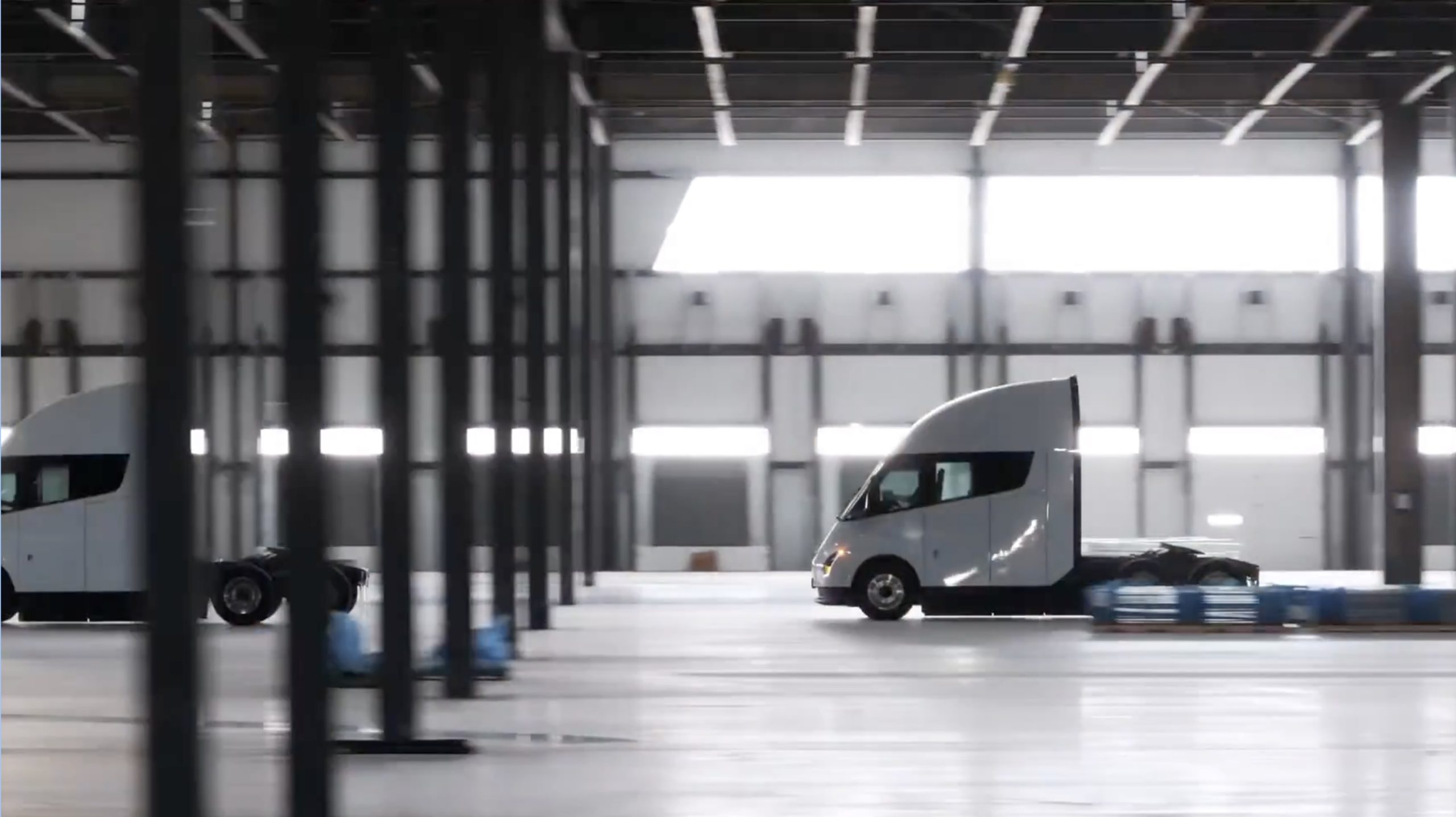
Tesla partner PepsiCo is set to build new Semi charging stations at one of its manufacturing sites, as revealed in new permitting plans shared this week.
On Friday, Tesla charging station scout MarcoRP shared plans on X for 18 Semi Megacharging stalls at PepsiCo’s facility in Charlotte, North Carolina, coming as the latest update plans for the company’s increasingly electrified fleet. The stalls are set to be built side by side, along with three Tesla Megapack grid-scale battery systems.
The plans also note the faster charging speeds for the chargers, which can charge the Class 8 Semi at speeds of up to 1MW. Tesla says that the speed can charge the Semi back to roughly 70 percent in around 30 minutes.
You can see the site plans for the PepsiCo North Carolina Megacharger below.
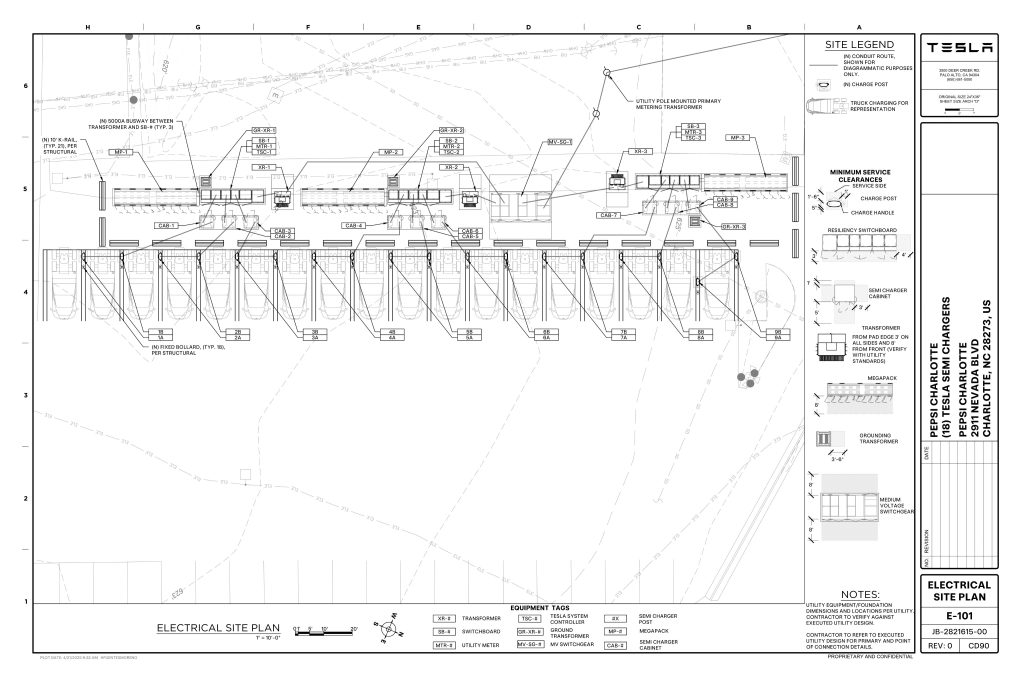
Credit: PepsiCo (via MarcoRPi1 on X)
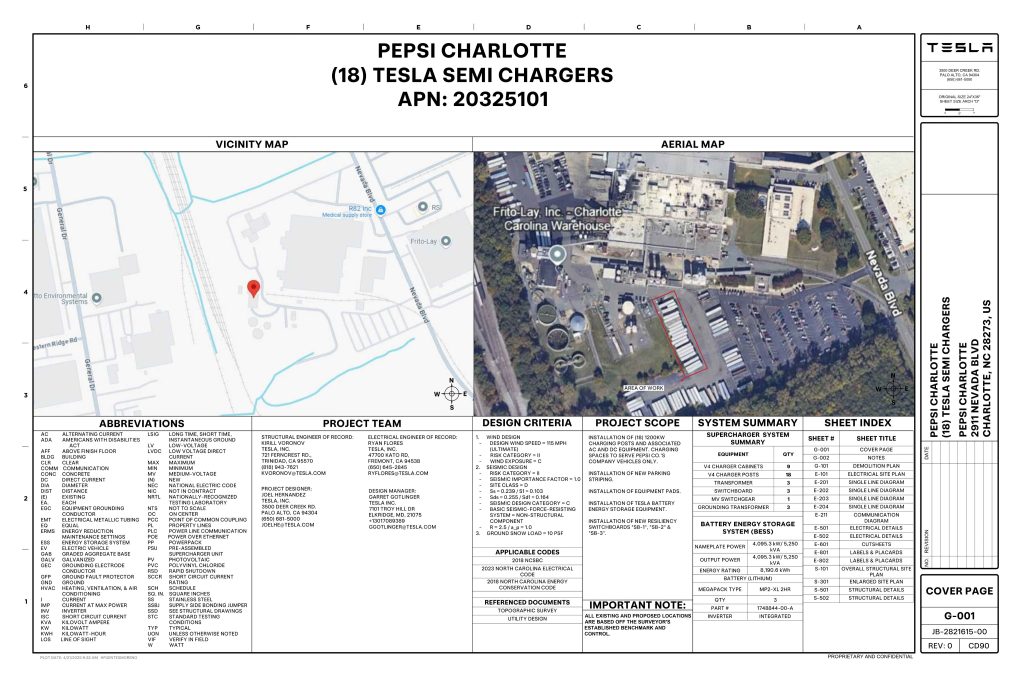
Credit: PepsiCo (via MarcoRPi1 on X)
READ MORE ON THE TESLA SEMI: Tesla to build Semi Megacharger station in Southern California
PepsiCo’s Tesla Semi fleet, other Megachargers, and initial tests and deliveries
PepsiCo was the first external customer to take delivery of Tesla’s Semis back in 2023, starting with just an initial order of 15. Since then, the company has continued to expand the fleet, recently taking delivery of an additional 50 units in California. The PepsiCo fleet was up to around 86 units as of last year, according to statements from Semi Senior Manager Dan Priestley.
Additionally, the company has similar Megachargers at its facilities in Modesto, Sacramento, and Fresno, California, and Tesla also submitted plans for approval to build 12 new Megacharging stalls in Los Angeles County.
Over the past couple of years, Tesla has also been delivering the electric Class 8 units to a number of other companies for pilot programs, and Priestley shared some results from PepsiCo’s initial Semi tests last year. Notably, the executive spoke with a handful of PepsiCo workers who said they really liked the Semi and wouldn’t plan on going back to diesel trucks.
The company is also nearing completion of a higher-volume Semi plant at its Gigafactory in Nevada, which is expected to eventually have an annual production capacity of 50,000 Semi units.
Tesla executive teases plan to further electrify supply chain
News
Tesla sales soar in Norway with new Model Y leading the charge
Tesla recorded a 54% year-over-year jump in new vehicle registrations in June.
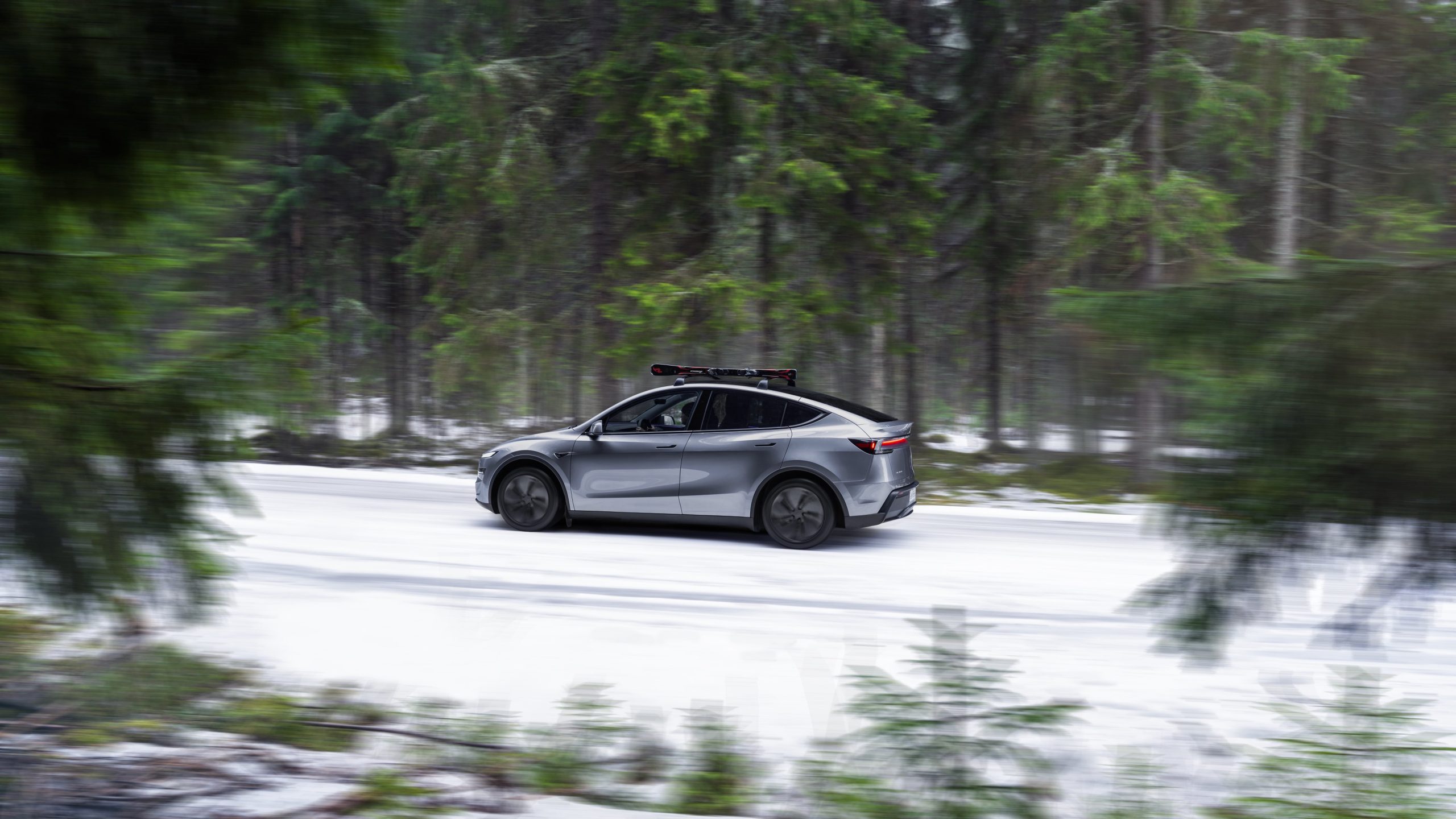
Tesla is seeing strong momentum in Norway, with sales of the new Model Y helping the company maintain dominance in one of the world’s most electric vehicle-friendly markets.
Model Y upgrades and consumer preferences
According to the Norwegian Road Federation (OFV), Tesla recorded a 54% year-over-year jump in new vehicle registrations in June. The Model Y led the charge, posting a 115% increase compared to the same period last year. Tesla Norway’s growth was even more notable in May, with sales surging a whopping 213%, as noted in a CNBC report.
Christina Bu, secretary general of the Norwegian EV Association (NEVA), stated that Tesla’s strong market performance was partly due to the updated Model Y, which is really just a good car, period.
“I think it just has to do with the fact that they deliver a car which has quite a lot of value for money and is what Norwegians need. What Norwegians need, a large luggage space, all wheel drive, and a tow hitch, high ground clearance as well. In addition, quite good digital solutions which people have gotten used to, and also a charging network,” she said.
Tesla in Europe
Tesla’s success in Norway is supported by long-standing government incentives for EV adoption, including exemptions from VAT, road toll discounts, and access to bus lanes. Public and home charging infrastructure is also widely available, making the EV ownership experience in the country very convenient.
Tesla’s performance in Europe is still a mixed bag, with markets like Germany and France still seeing declines in recent months. In areas such as Norway, Spain, and Portugal, however, Tesla’s new car registrations are rising. Spain’s sales rose 61% and Portugal’s sales rose 7% last month. This suggests that regional demand may be stabilizing or rebounding in pockets of Europe.
-

 Elon Musk2 weeks ago
Elon Musk2 weeks agoTesla investors will be shocked by Jim Cramer’s latest assessment
-

 Elon Musk2 days ago
Elon Musk2 days agoxAI launches Grok 4 with new $300/month SuperGrok Heavy subscription
-

 Elon Musk4 days ago
Elon Musk4 days agoElon Musk confirms Grok 4 launch on July 9 with livestream event
-

 News1 week ago
News1 week agoTesla Model 3 ranks as the safest new car in Europe for 2025, per Euro NCAP tests
-

 Elon Musk2 weeks ago
Elon Musk2 weeks agoA Tesla just delivered itself to a customer autonomously, Elon Musk confirms
-

 Elon Musk1 week ago
Elon Musk1 week agoxAI’s Memphis data center receives air permit despite community criticism
-

 News2 weeks ago
News2 weeks agoXiaomi CEO congratulates Tesla on first FSD delivery: “We have to continue learning!”
-

 News2 weeks ago
News2 weeks agoTesla sees explosive sales growth in UK, Spain, and Netherlands in June

